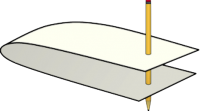
Virtual Reality is here. And it’s getting incrementally and rapidly more advanced every day. Some have already embraced it while others are not sure about its value. They see it as nothing more than another outlet for play and escapism from the daily grind. Today I’m going to help you understand that it has much more potential than we think.
When some new idea or concept comes along, we can’t always see its full potential and future value yet. So, instead, we say, “Who cares? What’s the big deal?”
And with today’s article, what has VR got to do with personal success?
After all, VR is just “a bit of a mind-flip” (Rocky Horror Picture Show quote), fooling the user’s mind into a new state of sensations and experiences, but nothing more useful than just a fun new experience, right?
But that’s where it gets interesting.
Let’s talk about success for a moment. Success is built upon three things, the conviction of an idea, the action to implement it, and the results of its conception. Without those three things, success is nothing more than a good idea.
Like the inception of the computer. Initially, we couldn’t see its future beyond lightning-fast computations and business applications. It hadn’t occurred to us yet that personal use would change our direction.
The idea of the computer started with Charles Babbage’s Analytical Engine back in 1837 (a decimal-based, non-programmable, mechanical device), to Zuse Z1 in Germany in 1939 (a binary-floating mechanical machine), to the Atanasoff-Berry Computer in the U.S. that was both binary and the first electronic machine.
Initially, computers went from calculating numbers at higher rates of return, to processing data, to offering and sharing information on many levels, on various subjects through the internet. From there, other advancements came about including graphic and image design, animation, video and streaming display, global communication, information, education, military applications, and now, advances in AI capabilities.
And once the idea of the personal computer was adopted, advancements became lightning-fast.
Understanding Memory
It’s easy to recall all the sensations attached to memory because you’ve already experienced them. You can recall sights, sound, touch, taste, feelings and emotions, with such clarity, so those memories seem very real to you.
However, future events don’t have those same visceral memories. You have not yet experienced those same sensations because it hasn’t happened yet, right? Actually, no, this is not the case at all.
People have been proving for many years that you can indeed experience something in the future as if it was already happening now.
We are slowly embracing ancient meditative practices to heal the body and the mind through future-visualizing.
The problem for most of us is that we tend to default to our rational mind for empirical proof that something is real before we are willing to accept and believe in it. However, this also is an untrue statement.
There are people who can conjure up thoughts, feelings, and emotional experiences of their future as if it was real right now.
One group who are masters of this practice is top athletes. Before an event, game, or competition, they are encouraged to rehearse an upcoming competition over and over again in their mind as if it were happening in the present.
In addition to their physical training, they rehearse an upcoming event in their mind, envisioning and experiencing every nuance and sensation. They mentally run the course or event, taking in every aspect of every sensation and experience from tying their shoes to running down a field, to dribbling a soccer ball towards the goal or lining up for a three-point basket. They imagine all the noises, the lighting, the interaction, their breathing, and their heart beating. All as if they are experiencing it now. In this way, they also train their muscle memory, movement, and reaction.
Another group that can successfully do this is artists. They can already see the beautifully detailed and intricate sculpture within the block of virgin marble. They can envision their creation as if it has already filled the blank canvas. The sensation of brush strokes, or the feelings of clay and other materials in their hands. The smells of oil paints, wet clay, thick cement, the heat of an acetylene torch, the vibrating hammering of a chisel on a marble slab, every sense is experienced.
A third group are the high-level entrepreneurs who can visualize their future concept as if it has already taken place. They can see and feel exactly where they want to be, who is with them, and what their vision will become. In this way, they are able to design and orchestrate their course of action, because, in their mind, they are experiencing it right now.
Storytellers, creative and fiction writers are masters at imaginative future conjuring. In fact, their ideas can often become reality. Space travel and going to the moon were pure fiction before the first launch back in the late fifties. Robots, flying through the air like Ironman, automatic doors, like in Star Trek, and Dick Tracy’s wrist-radio, all just imaginative fiction until someone figured out how to make them reality. And now we have Artificial Intelligence and Virtual Reality fast becoming our future.
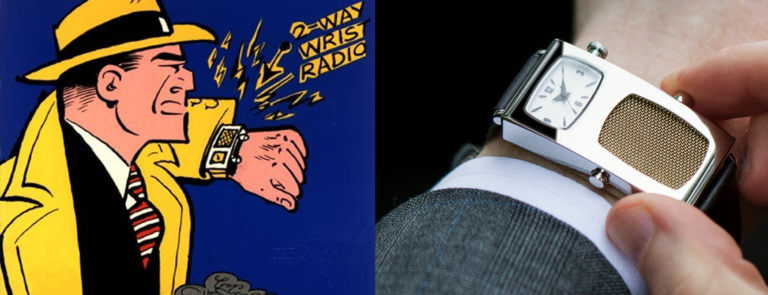
And here’s an interesting distinction between successful futurists and the naysayers… if they haven’t experienced something with all of their senses, they tend to doubt its validity, whereas futurists can put themselves in a state of already being there.
Let’s Flip the Paradigm
Did you know that the brain cannot distinguish real sugar from substitutes? For the most part, as wonderful and delicious as sugar is, we know it is not the healthiest of things for our bodies. And when people try to cut out or reduce their sugar intake, many will use substitutes because they still want to enjoy those delicious experiences. However, when you enjoy a sugar substitute or diet drink, your mind still thinks you’re ingesting sugar, so the body responds in exactly the same way, with little or no weight loss and no added health benefits.
When you do something for ten years it becomes hard to change one’s rational mental pattern. That’s why when we’re introduced to a new concept like future-thinking, it is hard to adopt, simply for the fact that there are no experienced memories attached to it, so we tend not to trust it. That is… until our senses come into question.
Interestingly, the mind can absorb the VR experience in much the same way as past experiences. If the experience is real enough to the senses, the mind cannot clearly distinguish between real and imagined, and the senses retain a memory of those sensory-experiences.
There is an illusion called the “Rubber Arm Experiment,” where a magician will hide the person’s real arm behind a partition and place a clearly fake arm in front of them. After some initial sensation manipulation, the illusionist will then do things to the ‘fake’ arm like hold fire to it or prick it with a pin. The volunteer begins to feel the sensations of the fake arm as if it were their own.
The mind has now adopted the fake arm as real.
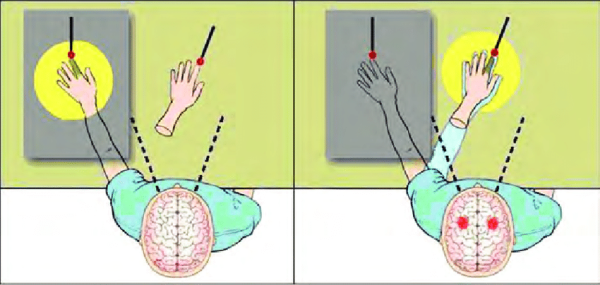
Watch the illusion here: https://www.youtube.com/watch?v=xdxlT68ygt8
Using Virtual Reality to Radically Shift Your Thinking
Recently, I experienced a Virtual Reality Dreamscape adventure where you can choose your adventure and put on all the (heavy) VR gear, and step into a new reality. The gear helps to provide you with a complete and totally immersive experience of all your senses. Feeling through haptics, sound, sight, and even the atmosphere is all programmed to provide a ‘real’ experience.
One of the things I love is the idea of venturing into space, so for my experience, I chose the space tour.
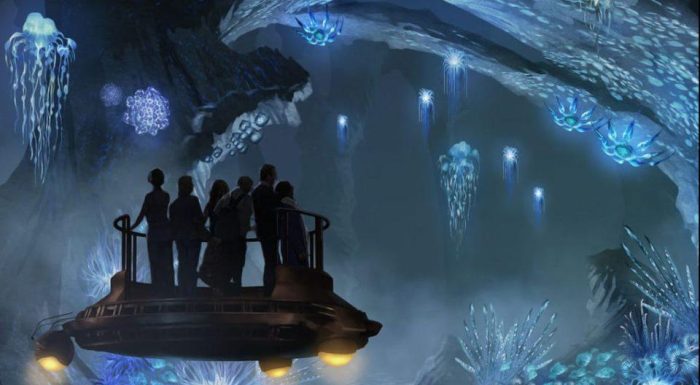
A group of five of us walked onto a platform that became a giant flying disc we would stand on that would take us on our space adventure. The movements, sights, and sounds were so convincing. So much so, that when my friend decided to challenge my senses of reality, I could not fully process what we were about to experience.
There we were, venturing into space. We were flying across the galaxy. Everything in my (rational) brain was telling me that while this was a super cool experience, we were still on terraform (solid ground), the floor beneath us. That is… until my friend grabbed my hand and pulled me off the flying disc and into space. Suddenly, we were walking (or floating) in space!
My mind could not process this VR sensation. It felt so real. I became instantly afraid of falling or floating away helplessly off into space. For a moment, I thought for sure that this was the end. My ‘rational’ mind had been triggered into believing that I might die right then and there. My heart was racing. My pulse was thumping hard.
But when I didn’t float away, when I looked down and could see all the stars and planets rushing beneath and around me, my rational mind could not successfully process what was happening, but I was slowly beginning to enjoy and marvel at this new experience of sensation. I was weightless and floating and experiencing a new set of sensory feelings that were as real to me as when I had a cup of coffee just an hour earlier. My mind could no longer distinguish between real and virtual.
My need to prove to myself what was ‘real’ was now in question. It was both exhilarating and mind-numbing all at the same time, but I was also amazed. I was slowly letting this experience become part of my reality, and that experience and sensation were fast ingraining itself into my memory core.
The strangest part is that weeks after the event, my mind still cannot fully process the experience. I now remember it as real on both a physical and emotional level.
Prove It!
As with many things experienced by the rational mind, we do so with the gauntlet of a “prove it” attitude, and until it’s shown to be real, we don’t fully believe nor trust in it and therefore we cannot fully process the idea.
So how does one translate future events that haven’t happened into reality?
The Secret of Mental VR: Future-Think
Using mental VR to design your future as if it were happening now, has been a practice that has been around for thousands of years. Most of us, however, don’t put a lot of faith into this thinking.
I’m talking about meditation and manifestation. Two things, by the way, that Disruptors do successfully. They’re able to envision and see the future they want and imagine as if it was happening right now.
Let me illustrate. I call this the Jewish-worry dilemma because my Jewish grandmother was so good at this.
She would worry, unnecessarily, about a future that hadn’t occurred yet. About me not going to college, losing a job, not being able to pay rent, getting into a car accident, or any other ungrounded thing she could worry about. But worrying doesn’t make it reality. All it did was to cause her undue stress and anxiety. So for me, worry was a just silly waste of one’s energy and mind.
However, when done creatively, manifesting and meditation have both been proven to have radical benefits in health and personal development. We now know scientifically that the mind is our most powerful tool and has been shown to be significantly instrumental in curing and improving ailments and maladies, pushing people to challenge themselves and enhance their capabilities, and historically, it has been proven that people who were told they would never walk again, have flipped that thinking, thus proving we are only limited by our current rational beliefs.
Principally, meditation is no different from what top athletes do to prepare for a competition. They rehearse the upcoming event over and over again in their mind until the experience becomes real to them. Meditation can do the same for any of us. But first, you must learn the basics; secondly, you must make it an important and regular practice, and third, you must trust in the process. Again, like anything new, in the beginning, you may not be as good as you could be with consistent practice.

Manifesting is pretty much the same… envisioning a future you desire as if it is happening right now. Placing yourself in a state of absolute conviction with all your senses that it is occurring in the present. In this way you don’t ‘hope’ it will happen, you already see and feel it happening.
There is a simple technique for ingraining this into your psyche. Imagine yourself thanking your boss for that raise. Imagine yourself speaking to a group of fans who just read your latest novel. Imagine yourself crossing the finish line while your competitor is a nanosecond behind you. Conjure up where you are physically, what you are wearing, the lighting, the weather, the people and sounds around you, the expression on your face, and the people around you congratulating you. The more detail you can add, the more your senses will begin to absorb this state and sensations as if they are already happening.
The problem for most people is that they demand empirical proof first. And this tells us instantly that those people are not ready or prepared to manifest. When you infuse a challenge of rational proof into the state of manifesting, you’ve already limited and defeated your intended outcome.
When you require concrete evidence before or during your manifestation practice, you are not trusting in your ability to make it a reality. It’s like an athlete saying, “Why bother? I’ll only lose.”
Manifesting is intuitive. And for you to successfully accomplish this, you must practice developing a stronger intuitive mind. You cannot ask when. You cannot ask how. And you cannot ask why. Those are all concepts the rational mind needs in order to analyze, validate, and use logical reasoning to show why something cannot be.
But let me share an idea with you. Albert Einstein, Michael Faraday, Philo Farnsworth, Srinivasa Ramanujan, Nikola Tesla, Nicolaus Copernicus, and other Disruptors all used their ungrounded, intuitive ideas to visualize unproven concepts. These ideas were initially nothing more than intuitive thoughts and creative imagining. It wasn’t until later that other scientists, mathematicians, and engineers vetted, verified, and proved their ideas and concepts to be completely sound.
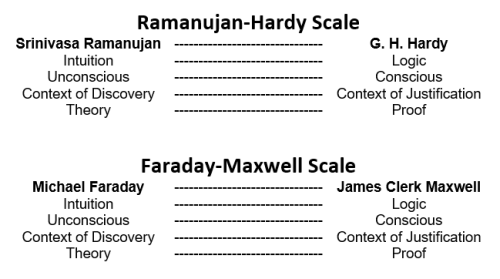
Success is based upon your belief in that success. And your belief is based upon the conviction of those ideas.
Consider the bridge you drive over to get to work, the building you work in, even the car you drive. Those were all initially someone’s imaginative ideas that eventually became reality.
“Whatever the mind can conceive and believe, it can achieve.” ~ Napoleon Hill
Virtual Reality, meditation, and manifestation are all aspects of the intuitive mind. The term “virtual” has had the meaning of “being something in essence or effect, though not actually or in fact.” VR is an immersive experience, but it is not as hard as we think to wrap our minds around. I’ll give you a hint that you already know how to experience this and do so on a regular basis.
When we get hungry, we typically think about what we want to eat. In our mind, we experience what we might be craving and how it might taste. We mentally picture ourselves eating pizza or a salad, or even a sandwich. And the one that feels most satisfying is the one we go for.
Of course, this is based upon past experiences, but it is also based upon placing yourself in the immediate imaginative future. You haven’t yet had that meal. But your imaginative reality has taken you there. And sometimes this experience happens so fast that we don’t pay more attention to it.
We do this at work on a daily basis, visualizing what needs to happen, how, and when. We future-think on a smaller scale every day.
The same goes for taking a vacation. You may or may not have experienced a particular destination, but your mind is already taking you through that experience virtually. Before ever leaving for your trip, you are already imagining your experienced relationship with the weather, the people, the sites, the foods, and the travel to and from. We imagine ourselves sitting on a lounge chair by the ocean, drinking a cocktail while basking in the sun or reading a novel. Again, we do this all the time, but pay little attention to the imaginative experience.
Learning to future-think and imagine greater are very potent tools few of us practice developing, but they have shown historically to have powerfully tangible benefits for those who can learn to access these deeper states of consciousness.
You already have these same latent talents within you. It will take some patience to develop, a lot of practice to master, and a new-found sense of ability to trust in your lesser-used intuitive mind, but it is not far out of reach and the return on investment is invaluable.
Just imagine what you could accomplish tomorrow, today.
